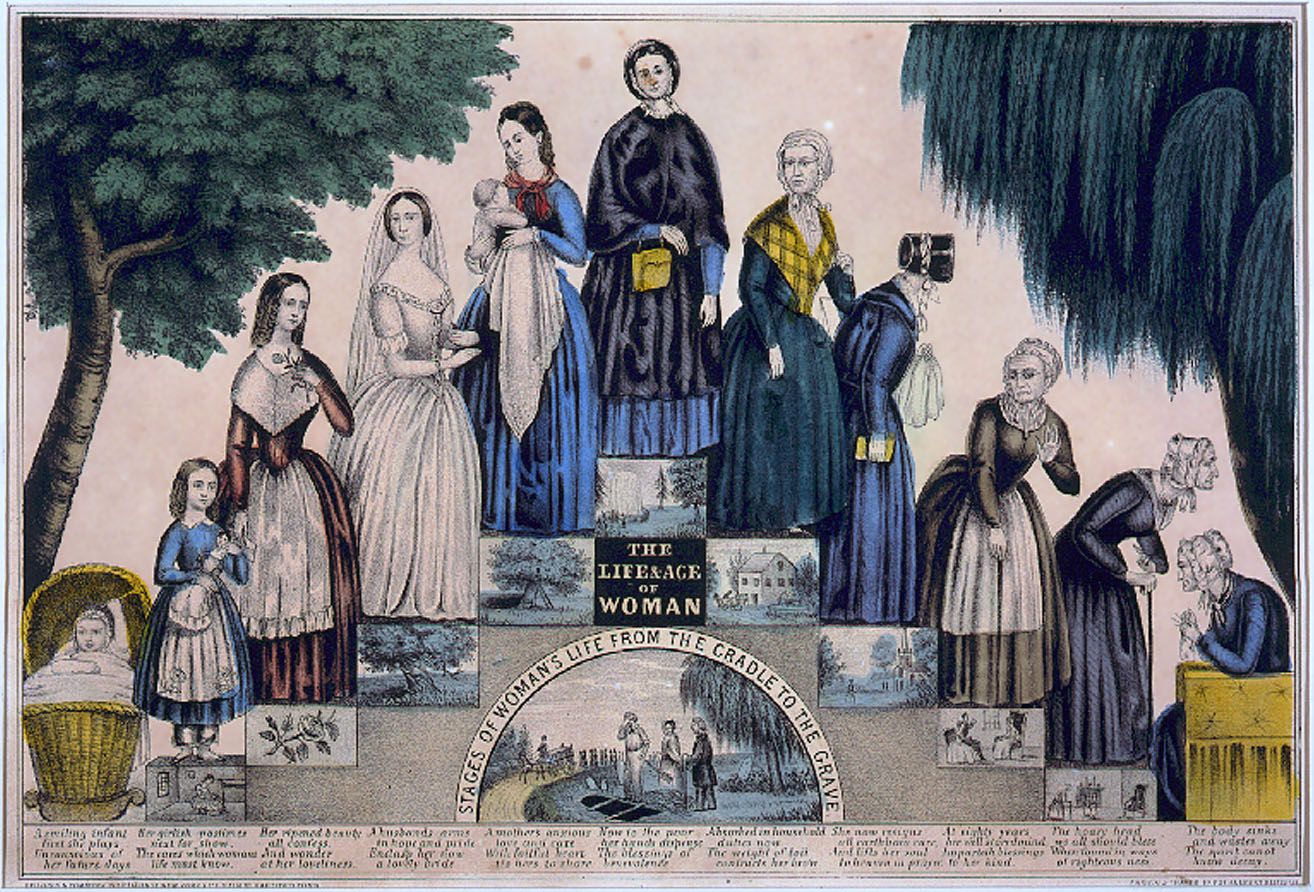
Step into a bygone era, in which the path to proper womanhood was constructed with peculiar wisdom and cautionary tales. The 19th century, an epoch brimming with innovation and societal transformations, also witnessed the emergence of an astonishing array of advice, particularly for young girls navigating their complex world. It was a period when every facet of a young lady’s life, ranging from her diet to her daydreams, was scrutinized and directed by an often perplexing set of rules intended to shape her into the ideal Victorian female.
Amidst this landscape of sincere, albeit not entirely logical, guidance, emerged a figure whose name would become synonymous with both health reform and, perhaps, an unparalleled zeal for moral purity: Dr. John Harvey Kellogg. Far more than merely the inventor of breakfast staples such as Corn Flakes and granola, Kellogg served as the superintendent of the West Health Reform Institute, which later became the Battle Creek Sanitarium. His grand vision was a healthy lifestyle, one that advocated exercise, simplicity, and, most fervently, the absolute rejection of all indulgences, especially what he referred to as “self-abuse.” His monumental 1887 work, Plain Facts for Old and Young: Embracing the Natural History and Hygiene of Organic Life, functioned as a comprehensive, 654-page manifesto on leading a truly healthy existence.
This captivating tome, originally entitled Plain Facts About Sexual Life in 1877, expounded on Kellogg’s philosophies in meticulous detail, providing guidance for both boys and girls alike. It is here that we uncover some of the most extraordinary pieces of advice aimed precisely at shaping the young female mind and body. Prepare to embark on a journey into a world where everyday choices carried moral weight, and seemingly innocuous habits could lead to unforeseen perils. Let us reveal the astonishing prescriptions that Victorian girls were expected to abide by, as dictated by one of the era’s most influential, and certainly most peculiar, voices.

1. **Be healthy to be beautiful.** In an era when female beauty standards were rigorously defined, Dr. John Harvey Kellogg presented a piece of advice that, on the surface, appears timeless: prioritize health for true beauty. Yet, his interpretation of what constituted ‘health’ was distinctly characteristic of the 19th century. He firmly maintained that a girl’s outward appearance was directly and rather unrelentingly linked to her physical well – being. This was not merely about feeling good; it was about presenting an alluring visage to the world.
Kellogg’s guidance allowed for minimal deviation, stating with unwavering conviction, “No girl can long be beautiful without health; and no girl who enjoys perfect health can be truly unattractive in appearance. A healthy countenance is always appealing.” This prescriptive perspective implied that any perceived lack of beauty was, in essence, a failure of health. It established a direct correlation between strict adherence to his lifestyle philosophies and a girl’s innate attractiveness, suggesting that true allure derived not from adornment, but from an almost ascetic physical purity.
Read more about: My Favorite Healthy Breakfast Ideas for a Busy Morning: Delicious & Easy Recipes You’ll Love

2. **Choose your friends wisely.** The company a young Victorian girl maintained was, according to Dr. Kellogg, a crucial determinant of her character and future. His advice on selecting companions constituted nothing less than a rigorous screening process, placing emphasis on moral rectitude rather than superficial charm. It was insufficient for a friend to be popular or engaging; she was required to embody a highly specific set of virtues; otherwise, she ran the risk of corrupting her associates.
Kellogg was categorical in his admonition: “A girl will invariably do well to avoid a companion who is vain, idle, silly, or frivolous. Girls who possess these evil characteristics are highly likely to have others that are worse. … No matter how pretty, witty, stylish, or aristocratic she may be, she ought to be shunned.” This stark warning highlighted the era’s deeply ingrained anxieties about female conduct and the widespread belief that moral failings were contagious. For a Victorian girl, friendship was not merely about companionship; it represented a profound moral choice, significantly influencing her own journey toward virtuous womanhood.
Read more about: Spring Forward in Style: 18 Essential Ways to Wear White Sneakers
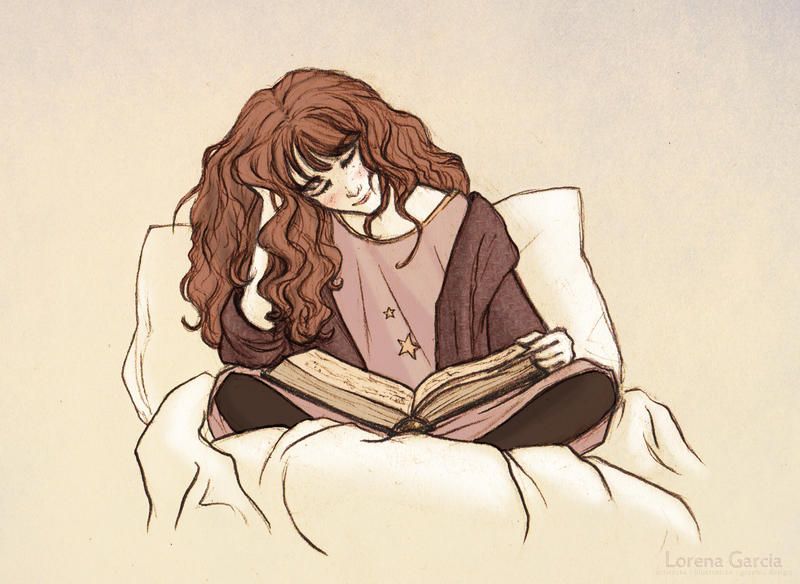
3. **Don’t read sentimental books.** Perhaps one of the most astonishing pieces of advice from the 19th century, particularly with regard to our modern sensibilities, centered around the perils of reading, especially novels. Both Dr. Kellogg and other Victorian advice – givers harbored a profound suspicion of popular fiction, perceiving it not as a source of innocuous entertainment, but as a potent and covert threat to a young girl’s mental and moral fabric. The very act of engaging with a fictional narrative, particularly a romantic one, was regarded as a route to destruction.
Dr. Kellogg was unequivocal in his statements, declaring that “A confirmed novel – reader is nearly as difficult to reform as a confirmed inebriate or opium – eater.” The perceived influence was “highly damaging and pernicious,” not only obliterating “the love for solid, useful reading,” but, more alarmingly, arousing “the emotions” and keeping “the passions in a state of intense excitement.” It was even proposed that parlor books, such as Chaucer’s poetry, could lead to “self – abuse for the satisfaction of passions.” The concern was not merely about intellectual indolence but about provoking forbidden thoughts and desires within the young female psyche.
This fear was echoed throughout other Victorian guides, which recommended caution when reading fiction, branding it “overly stimulating for their underdeveloped minds.” The prohibition was particularly targeted at adolescent girls, as it was believed that novels, along with parties and the opera, could prematurely “induce puberty too early.” British doctor Edward J. Tilt, in his guide On the Preservation of the Health of Women at Critical Periods of Life, expressed concern that romantic fiction would “over – stimulate young girls,” leading them to “seek romance in real life.” The underlying anxiety was that imagination, ignited by stories, would result in undesirable real – world actions, rendering reading not a pleasure, but a perilous gateway to moral corruption and even the “fragility of the human mind.”

4. **Avoid certain foods, and don’t even think about grabbing a coffee.** If you were of the opinion that Dr. Kellogg’s views on reading were stringent, his dietary recommendations for young girls represented a paragon of culinary asceticism, all propelled by the prevailing belief that food exerted a direct influence on moral character. His objective was to restrain “base desires,” and to accomplish this, he advocated a diet of absolute plainness and blandness, a philosophy that famously led to the creation of his bland Corn Flakes. This was not merely about healthy eating; it was about preventing what he perceived as moral laxity through gastronomic restriction.
The roster of prohibited foods was extensive and remarkably diverse, encompassing items that are today regarded as commonplace or even beneficial. Kellogg cautioned against “the consumption of stimulating and exciting food items,” including “spices, pepper, ginger, mustard, cinnamon, cloves, essences, all condiments, salt, pickles … fish, fowl, oysters, eggs, and milk.” Even seemingly harmless indulgences such as “late suppers, confectionery, and delicacies” were condemned. He believed that all these had “a very potent influence in an adverse direction by stimulating functions that ought to be maintained in as latent a state as possible.”
However, perhaps the most astonishing prohibition was against beverages that we now consider commonplace: tea and coffee. Kellogg’s denunciation was unequivocal, stating, “The consumption of tea and coffee by young ladies cannot be condemned too strongly.” The reason was astonishingly specific: “The influence of coffee in stimulating the genital organs is well – known.” This peculiar claim reveals a deeply ingrained fear of any substance that might arouse what he deemed to be unnatural or unchaste desires. For Victorian girls, the simple pleasure of a warm beverage or a flavorful meal was regarded not as nourishment or comfort, but as a direct threat to their purity and moral well – being.
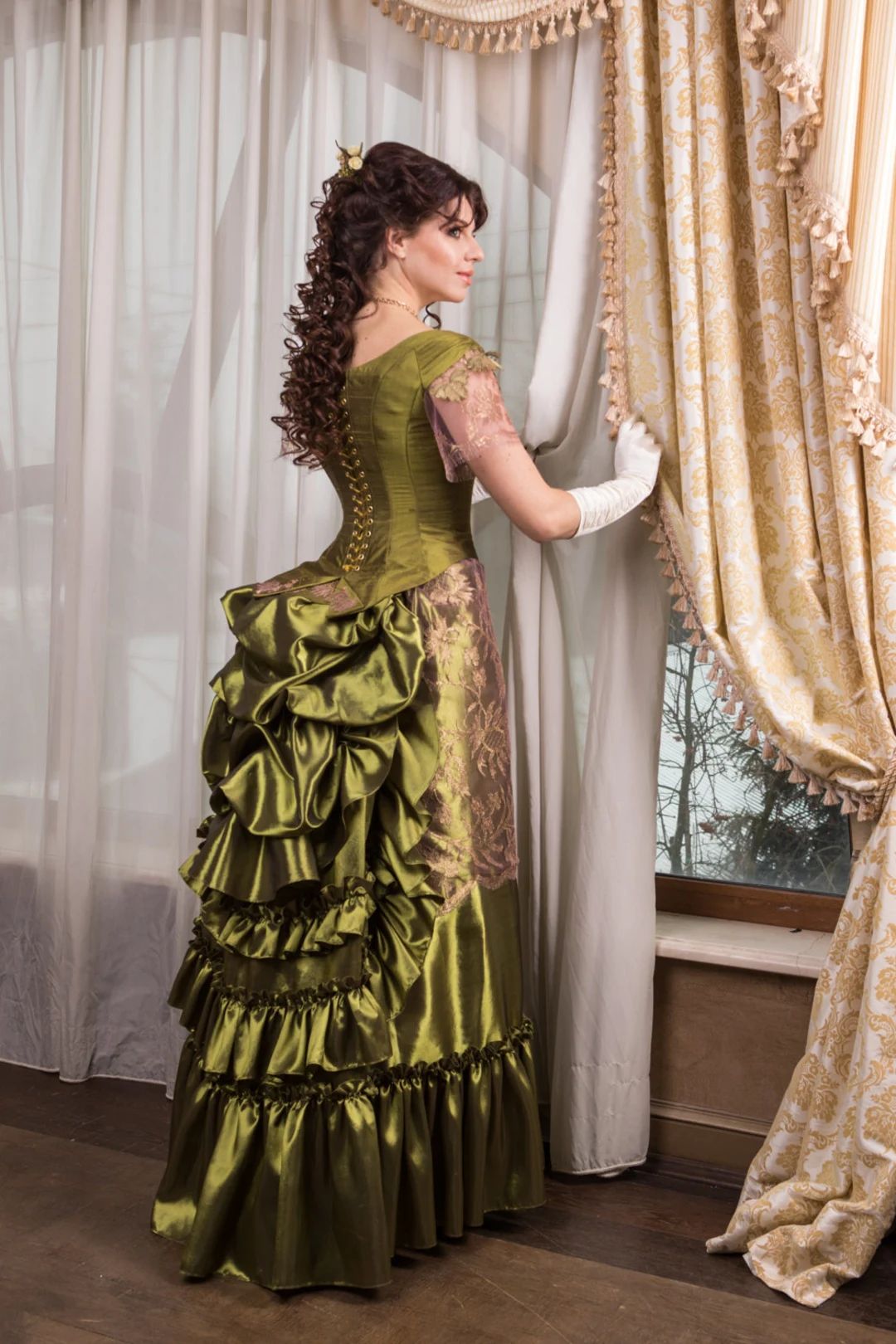
5. **Get married at the right age to the right person.** Marriage, the ultimate objective for numerous Victorian girls, was not entrusted to chance or youthful caprice under Kellogg’s guidance. Instead, it was presented as a physiological and moral necessity, to be undertaken with scientific precision and profound spiritual contemplation. The physician believed that there existed an ideal biological window for this sacred union, directly linking physical maturity to suitability for matrimony.
He asserted that “Physiology determines with precision the earliest period at which marriage is permissible. This period is the one at which the body attains complete development, which is not before the age of 20 for females and 24 for males.” Beyond the timing, the selection of a partner was of paramount importance, transcending mere physical attraction. Kellogg urged young ladies to “Look well before you leap; deliberate well, carefully, and prayerfully. A leap in the dark is a perilous risk and is far more likely to land you in a domestic purgatory than anywhere else.” This stern admonition against impulsive decisions was rooted in the belief that a mismatched union was a harbinger of domestic misery.
His counsel for selecting a mate was a resolute rejection of superficial allure. A girl was explicitly instructed, “Do not be dazzled by a handsome face, an agreeable demeanor, a brilliant or piquant manner.” Instead, the focus was to be entirely on internal virtues: “Choose, rather, modesty, simplicity, sincerity, morality—qualities of heart and mind rather than exterior embellishments.” In this perspective, marriage was a serious, lifelong commitment, demanding a partner of unimpeachable character, whose inner virtues far outshone any transient outward appeal.
Read more about: The Bedding Bailout: One Sleepover Horror Story That Proves Why Clean Sheets Are the Ultimate Escape Plan

6. **Keep the engagement short and sweet.** The period of courtship and engagement, frequently regarded as a romantic prelude to marriage, was regarded with profound suspicion by Dr. Kellogg, who cautioned against its prolonged duration. For him, a lengthy engagement was not an occasion for fostering deeper connection or conducting meticulous planning, but rather a perilous interval fraught with moral hazards. The prevailing societal concerns regarding pre-marital conduct found an ardent advocate in Kellogg, who perceived prolonged interactions between engaged couples as an open invitation to indiscretion.
He explicitly declared that “Long courtships and long engagements … yield no positive outcomes and are not infrequently the cause of significant harm,” specifying the alarming consequence of “extramarital sex.” The implication was unmistakable: the longer an engaged couple was allowed to interact, the greater the risk of yielding to temptation and transgressing the stringent moral codes of the era. While acknowledging that “There may be circumstances that make a prolonged engagement necessary and prudent,” Kellogg’s overarching view was that “in general, they should be avoided.”
This counsel underscored the Victorian preoccupation with preserving female purity and preventing any semblance of “secret sin” prior to marriage. It reflected a profoundly conservative perspective in which physical intimacy was strictly restricted to the confines of matrimony, and any circumstance that might lead to deviation from this path was to be rigorously suppressed. For a young Victorian girl, a hasty engagement was not a sign of rashness, but a commendable manifestation of moral sagacity, promptly leading to the security and sanctity of a marital union.
Read more about: Culinary Compass 2025: Navigating the Next Wave of Food Trends from Fiery Flavors to Farm-to-Table Freshness
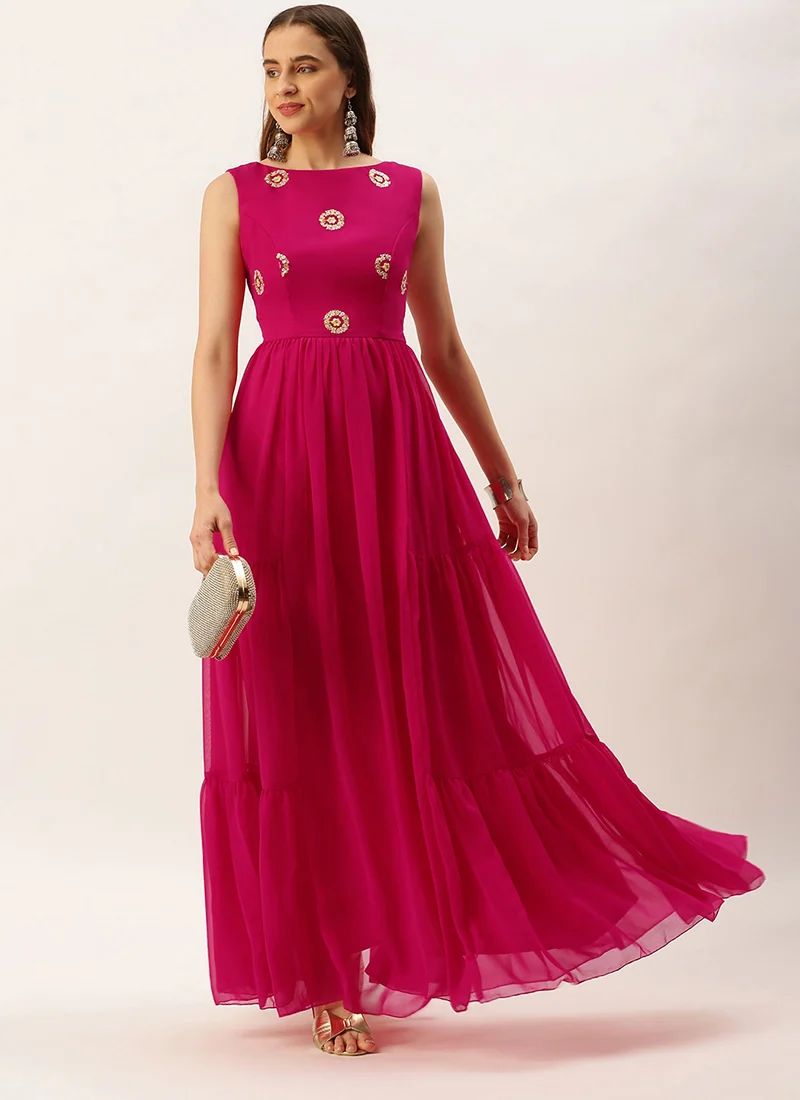
7. **Dress modestly and shun the latest trends.** Victorian fashion, frequently characterized by its intricate designs and constrictive undergarments, also encountered scrutiny from Dr. Kellogg, especially when it deviated from his stringent ideals of modesty and health. His guidance to young girls on attire constituted a combination of moral instruction and peculiar physiological cautions, directly linking sartorial selections to a girl’s susceptibility and moral character. Modesty was not merely a virtue; it served as a bulwark against external perils and internal temptations.
“Maidenly modesty is one of the finest qualities that any young lady can possess,” Kellogg asserted. He believed that a girl who “lacks modesty, who exhibits boldness of manner and negligence in deportment, is not only prone to having her virtue attacked by scheming and unscrupulous men, but is also likely to succumb to the temptation to engage in secret sin, which is certain to manifest itself in some form sooner or later.” Her clothing, therefore, was not a matter of personal preference, but a public proclamation of her moral resilience, or lack thereof.
Beyond modesty, Kellogg launched a direct attack on the prevailing fashion trends, particularly the pursuit of a slender waist, which entailed the infamous practice of lacing corsets. He warned that “the girl who ignores the laws of health … who conscientiously follows the fashions in her attire, lacing her waist to achieve the fashionable degree of slenderness … dressing inadequately in cold weather … can be certain that sooner or later, certainly in the near future, she will become as unappealing and plain as she would wish not to be…” His rationale for avoiding corsets was even more bizarre, postulating that fashion’s demand for a compressed waist obstructed “the circulation of the blood toward the heart.” This, he solemnly explained, caused “The venous blood [to be] forced back into the delicate organs of generation. Congestion occurs, and with it, through reflex action, the unnatural stimulation of the animal instincts.” Thus, following fashion trends was not merely unhealthy or unattractive; it was a direct route to inciting unchaste desires within oneself, rendering adherence to bizarre dietary and behavioral restrictions all the more crucial for the Victorian girl seeking to preserve her purity and future.
Having traversed the peculiar edicts of Dr. John Harvey Kellogg, a figure whose austere prescriptions aimed to shape the ideal Victorian woman from her very diet to her choice of corsetry, we now delve deeper into the labyrinthine world of 19th-century girlhood. Kellogg’s advice, for all its strictness, often concealed itself under the guise of scientific or physiological reasoning. However, as we peel back further layers of this bizarre historical tapestry, we encounter a realm where the consequences of perceived missteps were not merely ill-health or unattractiveness, but often moral ruin, social ostracism, or even, in chilling narratives, a tragic end.
This subsequent collection of admonitions draws from other influential voices of the era, notably Harvey Newcomb, whose Anecdotes for Girls presented vivid, cautionary tales designed to steer young ladies away from the perilous paths of “unchaste desires” and “secret sin.” These were not merely rules to live by; they were dire warnings, dramatized to instill fear and obedience, transforming seemingly innocent pastimes into fraught moral battlegrounds. Prepare to uncover the extraordinary beliefs of a time when a girl’s every thought and action was meticulously scrutinized, lest she stray from the narrow path of Victorian propriety.

8. **Don’t be a flirt.** In a society obsessed with defining proper female conduct, the seemingly innocuous act of flirting was deemed a grave moral offense by Dr. Kellogg, who branded it “pernicious in the extreme.” Far from being a harmless pastime or a youthful exploration of social dynamics, flirtation, in his view, exerted a “malign influence alike upon the mental, the moral, and the physical constitution of those who indulged in it.” This was not merely about maintaining decorum; it was about safeguarding the very essence of a young woman’s being.
Kellogg painted a bleak future for the “young lady who has become infatuated with a passion for flirting, courting the society of young men simply for the pleasure derived from their attentions.” Such behavior, he argued, was an education in a “school which would totally unfit her for the enjoyment of domestic peace and happiness.” The implication was chillingly clear: true fulfillment, epitomized by marriage and domestic bliss, would forever elude the flirt. She was “surely sacrificing a life of real happiness for the transient fascinations of unreal enjoyment and pernicious excitement,” a stark warning that pleasure outside sanctioned domesticity led only to emptiness.
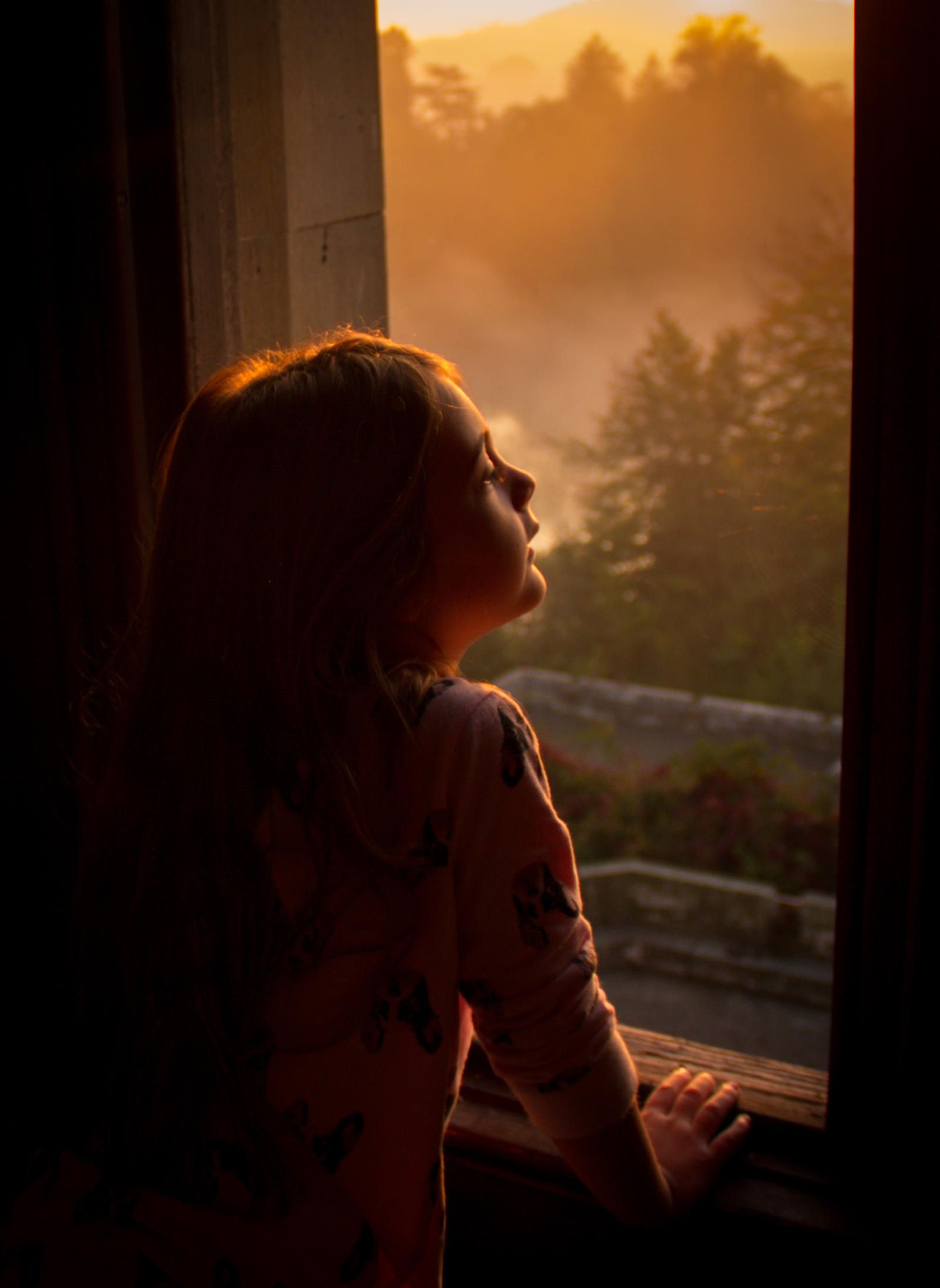
9. **Daydreaming is dangerous.** If the physical actions of a Victorian girl were meticulously policed, her inner world was equally subject to intense scrutiny, with Dr. Kellogg issuing a startling decree against the seemingly innocent act of daydreaming. These “lascivious daydreams and amorous reveries,” particularly indulged in by “the idle, the voluptuous, the sedentary, and the nervous,” were not dismissed as harmless mental wanderings. Instead, they were depicted as insidious threats, leading down a path of profound physical and moral decay.
Kellogg gravely warned that such mental excursions were “often the sources of general debility, effeminacy, disordered functions, premature disease, and even premature death, without the actual exercise of the genital organs.” This bizarre connection between imaginative thought and physical debilitation highlights the era’s deep-seated anxieties about female sexuality and the belief that even unexpressed desires could wreak havoc on a woman’s body and soul. For him, “unchastity of thought—this adultery of the mind—is the beginning of immeasurable evil to the human family,” a stark testament to the Victorian fear that imagination itself could be a dangerous gateway to corruption.

10. **Reading at night is injurious to one’s health and home.** Stepping away from Kellogg’s direct medical pronouncements, we delve into the narrative warnings of Harvey Newcomb, whose Anecdotes for Girls served as a moral compass for anxious Victorian parents. Newcomb’s approach focused less on physiological mechanisms and more on vivid, cautionary tales, illustrating the direct and often divine consequences of straying from prescribed behavior. One such peril was the seemingly innocent habit of reading late at night, a pursuit that, in Newcomb’s telling, carried catastrophic implications for both property and person.
He vividly recounted the story of Tirzah Locke, a young lady with the “unsafe practice” of sitting up to read “after all others in the house had retired to rest.” Her cozy, late-night literary adventures, much like those of a modern reader, often ended with her falling asleep by her lamp. However, unlike our electric lights, Tirzah’s “oil-burning” lamp posed a literal fire hazard. The inevitable occurred: she accidentally knocked it over, causing “catastrophic property damage and nearly resulting in her demise,” from which she was rescued only by a male housemate. Though she promised never to read at night again, Newcomb assured his readers that divine justice was not to be evaded.
Years later, Tirzah sat by an “open window,” attempting to distinguish the colors of flowers, but they appeared “all blended and indistinct.” Newcomb grimly revealed, “The habit, which she indulged in while a girl, of reading late at night, though she perceived no ill effects at the time, had ruined her sight, and she was destined to spend the remainder of her days in almost total darkness.” This was not a mere accident; it was a just punishment for her defiance of proper “time management” and “rest,” delivering a stern lesson for any girl who dared to seek knowledge or pleasure in the forbidden hours after dark.

11. **Reading the wrong kind of novels leads to a girl’s ruin.** Beyond the physical dangers of reading in low light, the content of a girl’s chosen literature posed an even greater moral minefield, according to Newcomb and other Victorian moralists. While Dr. Kellogg warned of novels exciting “passions,” Newcomb escalated the alarm, positing that “trashy novels,” especially romantic ones, directly imperiled a girl’s virtue and future. This concern was not rooted in intellectual laziness but in the fundamental reshaping of a young woman’s worldview, rendering her tragically susceptible to manipulation.
Newcomb asserted that “Novel-reading fills the heads of young ladies with romantic notions.” Far from preparing them for the realities of life, these stories rendered them “weary with the dull round of ordinary life,” causing them to “sigh for some adventure, such as they have read in the words of fiction.” The grim consequence was clear: such girls became the “perfect easy prey to the false-hearted libertine.” To drive this point home, he presented a purportedly factual account of a 16-year-old orphan in Upper Canada, whose “relaxed” teacher permitted her to consume so many romantic novels that her thoughts shifted from “duty” to illicit “love.”
This narrative culminated in the girl running off with a stranger, defying her guardian’s counsel, only to discover that her new “husband” was already married and was subsequently imprisoned. The story painted a harrowing picture of a life “returned, ashamed and broken-hearted, to her friends,” serving as a stark “lesson to boarding-school misses to mind their studies and keep shy of novels, men, and boys.” The underlying message was unambiguous: unchecked imagination, especially when fueled by romantic fiction, constituted a direct path to profound personal failure and societal disgrace, ensuring that boredom was preferable to ruin.

12. **Women can’t drink wine like men because of science.** In the 19th century, even the consumption of alcohol was framed not just as a moral failing but as a bizarre physiological peril, especially for women. Harvey Newcomb presented a uniquely Victorian “scientific” explanation for why women, unlike men, simply could not safely consume liquor. While men might engage in “debauchery” or “discuss business” over drinks, Newcomb implied that women had no legitimate reason to partake in such activities, and indeed, faced unique risks if they did.
His reasoning was astonishingly specific: when wine or beer enters the “warm stomach” of a lady, the alcohol, through “distillation,” rises. “Up it flies into the brain,” he warned, and if it does not “blow off the cap, it may play mischief there in ways not very credible.” The astonishing conclusion was that a woman literally became a “distillery,” and the alcohol, having “nowhere to go but her tiny brain,” would inevitably “affect her mind adversely.” This bizarre physiological claim, attributing women with “warm stomachs” that made them uniquely susceptible to alcohol’s brain-altering effects, perfectly encapsulates the era’s blend of pseudo-science and moral judgment, all designed to reinforce strict gendered behaviors.

13. **A pin a day brings inevitable death.** Even the most mundane household items could become instruments of a girl’s demise, as illustrated by Newcomb’s chilling tale about the perils of pins. In an era when sewing was a fundamental skill for every young woman, a seemingly minor habit—that of holding pins in one’s mouth—was elevated to a grave, potentially fatal error. This anecdote served as a visceral warning against carelessness and underscored the importance of meticulous adherence to proper etiquette and practice, even in the minutest details of daily life.
Newcomb recounted the “harrowing account” of a girl who, accustomed to placing pins in her mouth, accidentally swallowed several. While one caused “great distress” by getting lodged in her throat, it was the others that sealed her fate: “The pins which she had swallowed occasioned terrible pains in her stomach and bowels and rendered her severely ill, so it was thought she could not survive long.” The moral was stark and immediate: “Pin cushions. Use them, ladies! Your mouth is for smiling at men’s jokes, not for laughing out loud; that is vulgar.” This grim lesson reinforced the notion that even an innocent-seeming habit, if contrary to proper decorum, could lead directly to “instant death.”
Read more about: Mind-Bending Time Jumps & Shocking Twists: 11 Wild Moments From M. Night Shyamalan’s ‘Old’
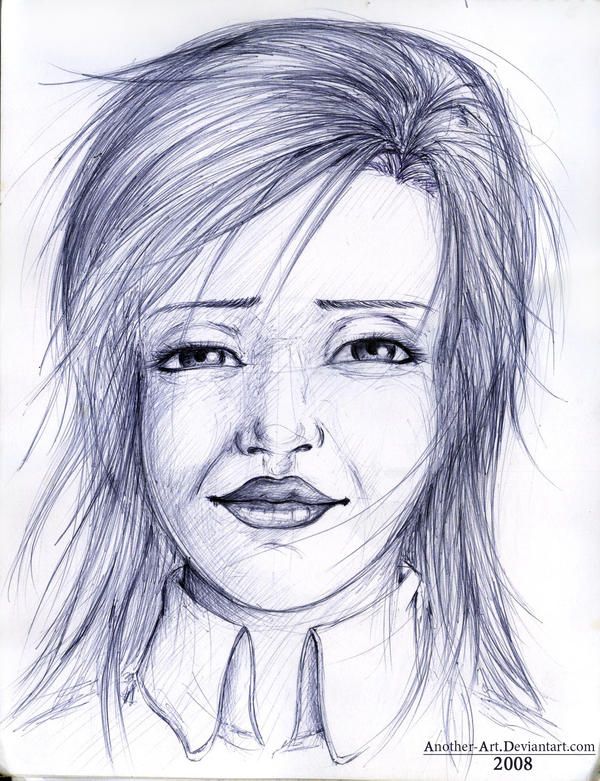
14. **Temper makes a girl ugly and maybe a murderer.** Victorian society held sweetness and docility as paramount virtues for young ladies, and any deviation from this ideal, particularly the display of temper, was seen not merely as an imperfection but as a potential harbinger of monstrous acts. Harvey Newcomb brought this terrifying admonition to life with the story of Anne, a wealthy nobleman’s daughter whose intermittent sweetness masked a violent disposition. This narrative served as the ultimate cautionary tale, illustrating how unbridled emotion, if left unchecked, could lead to irreparable harm and profound tragedy.
Anne, despite her charm, would “throw punches” when upset, a behavior that remained uncorrected by her household, presumably for fear of retribution. This unchecked rage, Newcomb explained, culminated in a “tragic conclusion” upon the birth of her mother’s son. Driven to “fury by a servant confirming her worst fears that her parents would love the boy more,” Anne committed the unthinkable: “she threw a smoothing iron at the baby’s head, killing him instantly.” The horror continued as her mother died “that night of grief,” leaving Anne to a life devoid of smiles. This stark, melodramatic tale underscored the Victorian belief that a girl’s temper was a dangerous, morally corrupting force that could unleash unspeakable evil, making outward serenity and emotional control not just polite behaviors, but essential safeguards against a descent into utter depravity.
As we close the curtain on this extraordinary journey through the bizarre, often chilling, advice imparted to 19th-century girls, it becomes abundantly clear that their world was one of intricate rules and profound anxieties. From Dr. Kellogg’s hyper-vigilant dietary and moral prescriptions designed to quell “animal propensities,” to Harvey Newcomb’s dire narratives of blindness, ruin, or even death brought on by reading, flirting, or dancing, every aspect of a young woman’s life was a potential moral trap. These were not merely suggestions but stern warnings, reflecting a pervasive societal fear of female agency, imagination, and indeed, any deviation from a rigidly defined path of purity and domesticity.
What stands out is the sheer audacity of these pronouncements, often cloaked in pseudo-science or dramatic, fictionalized cautionary tales. They paint a vivid, if unsettling, portrait of an era where childhood was fleeting and the pressures of conforming to an ideal were immense. While we can now look back with a sense of curious detachment, perhaps even amusement at some of the more outlandish claims, these “plain facts” and “anecdotes” were the guiding lights, however flickering and strange, that illuminated the path for countless young women through the shadows of the Victorian age. Their stories, and the advice they received, serve as a fascinating, if sometimes bewildering, testament to the ever-changing, often bizarre, landscape of human wisdom.



